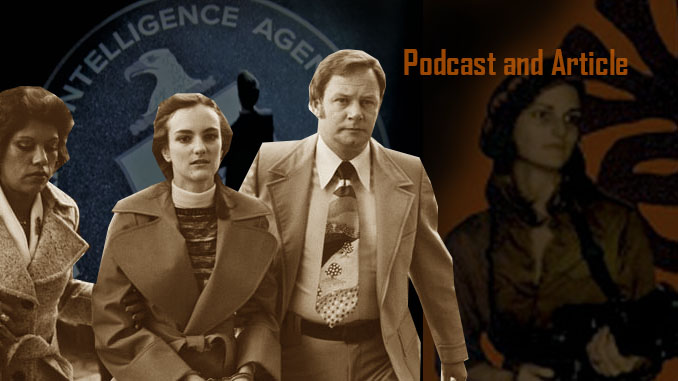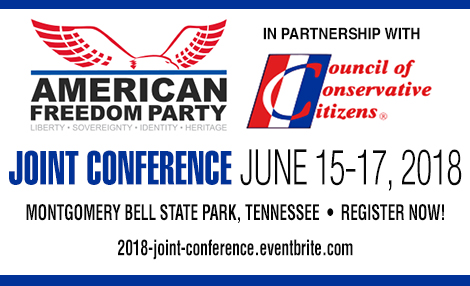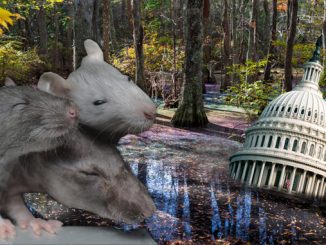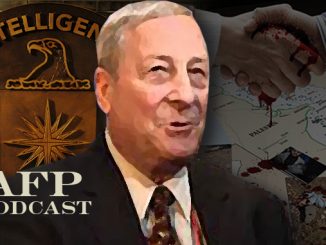
The author of a new book has powerfully countered CNN propaganda, boldly challenging the accepted mainstream version of “the most notorious American kidnapping since the baby of Charles and Anne Lindbergh was taken in 1932.” In doing so, Brad Schreiber exposes how the U.S. undermines dissident groups through revealing the real history of the Symbionese Liberation Army’s kidnapping of media mogul heiress Patty Hearst.
By S. T. Patrick
Political kidnappings are rare in North America. More common in Latin America, South Asia, and Africa, they are most often used to gain political concessions, commodity control, money, notoriety or a combination of the four. Someone who may be valuable to a wealthy and powerful entity is kidnapped in exchange for something that is of value to the kidnappers.
Patricia (Patty) Campbell Hearst was an heir to the publishing fortune of William Randolph Hearst. She was valuable. The Symbionese Liberation Army (SLA) and their leader, Donald DeFreeze, wanted to make a statement that would instantly gain them notoriety through the media, a business the Hearsts knew very well.
When Hearst, a sophomore at the University of California-Berkeley, was kidnapped by members of the SLA on Feb. 4, 1974 there was reason to believe the motives were political and monetary. When no ransom demand was given to California authorities, the media began reporting the story as a political kidnapping. It quickly became the most notorious American kidnapping since the baby of Charles and Anne Lindbergh was taken in 1932. As the story unfolded, the characters, events, and history behind the kidnapping became even more bizarre than what was being reported.
In Revolution’s End: The Patty Hearst Kidnapping, Mind Control, and the Secret History of Donald DeFreeze and the SLA, author Brad Schreiber boldly challenges what is still the accepted mainstream version of the story. It is the mainstream version that was featured on CNN’s recent docuseries, “The Radical Story of Patty Hearst.” In challenging the CNN version of the story with documents and archival interviews that have been available since researcher Dick Russell revealed them in 1976, Schreiber is also challenging the work of CNN’s legal analyst, Jeffrey Toobin, on whose work the CNN series was based.
While Toobin’s work focuses largely on Hearst, Schreiber’s research delves deeper into the history and ideologies of the SLA and DeFreeze, both of which stem from California Gov. Ronald Reagan’s attempts at infiltrating left-wing political groups. California’s infiltration project was led by Reagan’s attorney general, Evelle Younger, as well as the CIA.
Three months before the Hearst kidnapping, the SLA had been responsible for killing Marcus Foster, the first black superintendent of the Oakland Unified School District. The killing baffled journalists and officials. The SLA had come to prominence as a radical left-wing group concerned mainly about the plight of black Americans. The Foster murder created a rift between the SLA and the Black Panthers, which had formed in Oakland in 1966. It is senseless unless you view the rift as an intentionally created one, as Schreiber does.
While DeFreeze was incarcerated at Vacaville Prison, he became associated with the Black Cultural Association (BCA), a group led by UC-Berkeley professor and CIA asset Colston Westbrook. The BCA would bring white, radical students into the prison to help facilitate political and educational discussions with black inmates housed in a wing used and funded by the CIA for mind control and sociological experimentation projects.
It was through the BCA that Hearst first met the incarcerated DeFreeze. Using a fraudulent ID of friend Mary Alice Siem in a time when prison rules were much more lax, she then began sending money to DeFreeze. Hearst and two of Westbrook’s other volunteers, Patricia Soltysik and Nancy Ling Perry, also engaged in sexual activity with DeFreeze while at Vacaville. DeFreeze and other prisoners targeted by Westbrook were placed on heavy doses of medication.
DeFreeze was offered a deal by the California Department of Corrections and the CIA. He would be released (portrayed as an escape) in exchange for starting a phony left-wing group—the SLA—and working in chaotic opposition to the goals of the Black Panthers and the New Left. Westbrook would serve as the control agent for DeFreeze, who had previously been used as an informant to set up the Black Panthers for the Los Angeles Police Department.
After DeFreeze left prison, he was reunited with Soltysik and Perry, who became SLA members. The group’s spurious origins were known by Westbrook and DeFreeze, but not by its white, radical members.
“None of the core 10 white followers of the SLA ever knew that DeFreeze was working for the state,” Schreiber said in an interview with this writer. “They believed it was a radical group, and they believed in revolution. They thought America was a racist country . . . and they thought that the Vietnam War was an immoral war. They were following a black prisoner . . . and they had no idea he was setting them up. . . . They were following DeFreeze blindly.”
According to Schreiber, the kidnapping of Hearst was undertaken by the SLA because DeFreeze felt abandoned by Hearst and had animus toward her. It was, therefore, a personal kidnapping and was neither political nor random. Schreiber believes that Hearst did not expect the kidnapping, nor did she take a willing part in it.
Aside from DeFreeze, the SLA members treated Hearst well. She was already politically radical. DeFreeze employed the use of drugs, intimidation, and sex with other members to mentally coerce Hearst into participating with the SLA in the Hibernia Bank robbery and other activities.
Schreiber is often indignant at the mainstream’s focus on the Hearst angle in the story. Reagan, Younger, and the CIA bear responsibility for the programs by which false left-wing groups were created in California. One of those groups, the SLA, murdered a school superintendent before engaging in a robbery of a San Francisco bank. In a later shootout with the LAPD, six SLA members were killed.
The focus of the story, to Schreiber, is the infiltration of the left, the corruption of the California Department of Corrections, the murder of school superintendent Foster, and the sad deaths of the group’s committed believers.
Schreiber’s point of view is a reminder that the truth of history can be found through dissecting the story of someone the mainstream media views as a minor character. Schreiber found both the truth and the true tragedy of the story within the biographies of the supposedly extraneous figures that surrounded Patty Hearst in 1974 rather than through biographies of Hearst herself.
S.T. Patrick holds degrees in both journalism and social studies education. He spent ten years as an educator and now hosts the “Midnight Writer News” show. His email is [email protected].




